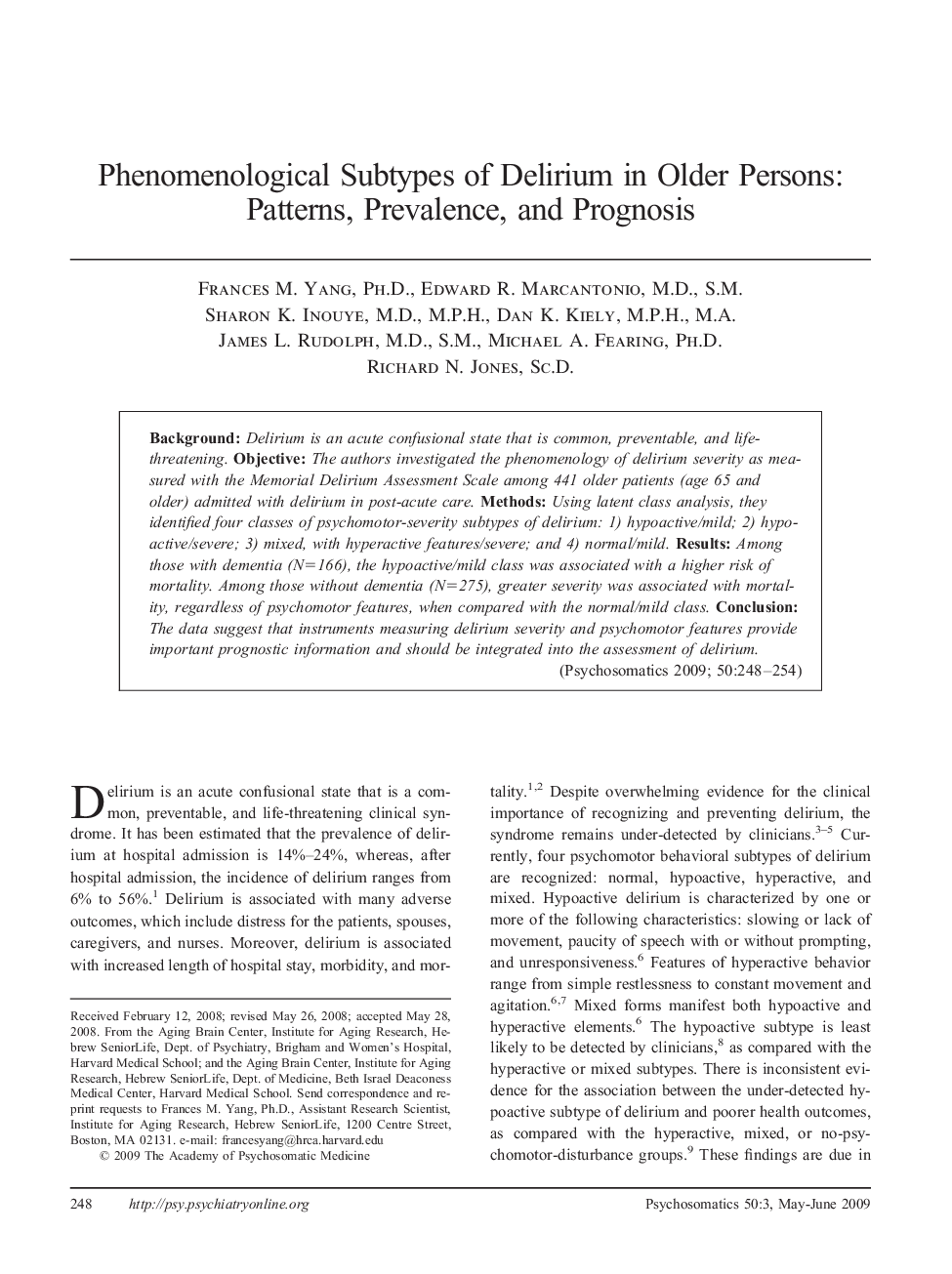| کد مقاله | کد نشریه | سال انتشار | مقاله انگلیسی | نسخه تمام متن |
|---|---|---|---|---|
| 339454 | 548083 | 2009 | 7 صفحه PDF | دانلود رایگان |

BackgroundDelirium is an acute confusional state that is common, preventable, and life-threatening.ObjectiveThe authors investigated the phenomenology of delirium severity as measured with the Memorial Delirium Assessment Scale among 441 older patients (age 65 and older) admitted with delirium in post-acute care.MethodsUsing latent class analysis, they identified four classes of psychomotor-severity subtypes of delirium: 1) hypoactive/mild; 2) hypoactive/severe; 3) mixed, with hyperactive features/severe; and 4) normal/mild.ResultsAmong those with dementia (N = 166), the hypoactive/mild class was associated with a higher risk of mortality. Among those without dementia (N = 275), greater severity was associated with mortality, regardless of psychomotor features, when compared with the normal/mild class.ConclusionThe data suggest that instruments measuring delirium severity and psychomotor features provide important prognostic information and should be integrated into the assessment of delirium.
Journal: Psychosomatics - Volume 50, Issue 3, May–June 2009, Pages 248–254